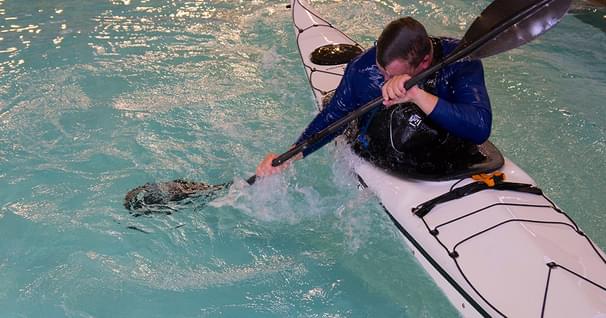3 Golden Rules of Canoeing Technique
Andrew Westwood looks at the 3 Golden Rules of Canoeing, which are a set of rules that define how to make all your canoeing strokes as effective and efficient as possible.
The three golden rules are a set of rules that when followed will let you paddle the most comfortably, safely, and efficiently.
1. You need to use the power of torso rotation.
2. You need to let your upper and lower bodies work independently, but cooperatively with each other
3. You need to keep your hands within your field of vision.
Rotating your torso and every paddle stroke uses your upper body to power the stroke, not just the arms and the shoulders. In fact, think of the arms as just tuning the position of the paddle while the torso acts as the motor to drive each stroke.
Torso rotation involves twisting at the waist to wind up your body. When your body is wound up, your chest will no longer face the direction that your canoe is pointing. With your body wound up, your arms position your paddle in the water. The power for your stroke now comes from the unwinding motion of your upper body. When you're paddling, your upper and lower body each have their own unique rule to play. Your upper body controls the paddle and provides the power needed to move your canoe. While the lower body is in charge of keeping the boat stable, or tilting it on edge when necessary.
If you need for example to make a carving turn with your canoe, you'll be tilting it the same way you tilt your bike into a turn. To do this, you need to press down with one knee to bring your canoe on edge while the upper body stays upright.
By keeping your arms within your field of vision, you'll make your strokes the most effective and keep your arms in the most comfortable and safest position. Another way of thinking of keeping your arms within the field of vision is to think of your arms, chest, and paddle forming a box when you hold the paddle in front of you. And you have to keep this box intact during every stroke. This doesn't mean that you can't reach to the back of your boat to take a stroke. It just means that in order to do so, you'll have to rotate your whole upper body so that your arms stay within your field of vision. Of course this also encourages the last golden rule we just looked at, which says rotate your torso.
~Get the BWCAW Tee~
With over 1,090,000 acres of wilderness area, the BWCAW is a paddler's paradise.
Related Articles
As the days get shorter and the weather gets colder, it becomes harder to get out and paddle and easier…
Mention “pool session” and the first image that pops into most kayakers minds is a class in how to roll.…
Paddling alone is a recipe for danger. Bring a buddy and stay safe on the water.




